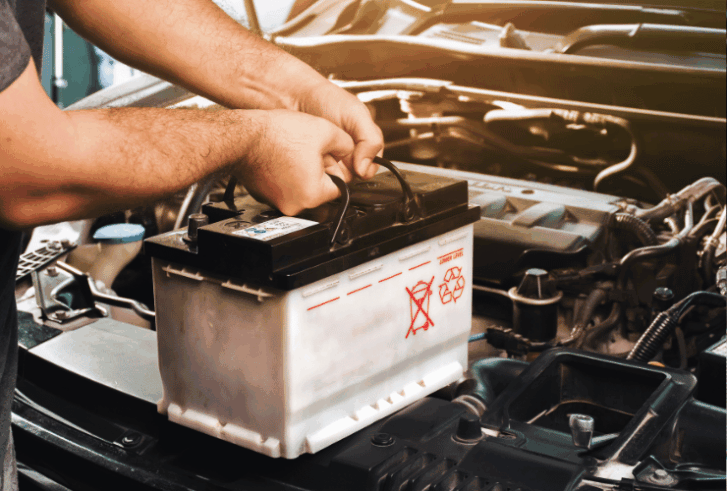When your car has difficulty starting, it’s easy to panic and question whether you’re dealing with a dead battery or a failing alternator. A slow cranking vehicle can leave you stuck and stressed, uncertain if you’re facing a simple fix or a costly repair. Understanding the difference before you get stranded saves time, money, and headaches—this guide breaks down car battery troubleshooting and alternator diagnosis so you can take control. For accurate diagnostics and reliable repairs, the experts at K & M Auto Service are ready to help.
Recognizing Common Symptoms
Identifying early signs of trouble can help you prevent bigger problems. Let’s explore some common symptoms that indicate either a dead battery or a failing alternator.
Slow Cranking Vehicle
Does your car struggle to start when you turn the key? You might be dealing with a slow cranking vehicle. This is often one of the first indicators that something is wrong. A sluggish start can mean your battery is low on charge or the alternator isn’t providing enough power. Picture this: you’re late for a meeting, and your car hesitates to start. It’s a moment of panic, but knowing this symptom puts you a step ahead in identifying the issue.
Frequent Jump Starts Needed
If you frequently find yourself reaching for jumper cables, it’s a red flag. Regularly needing jump starts suggests your battery isn’t holding a charge or your alternator isn’t charging it properly. Frequent jump starts can be frustrating and signal that something more than a one-time issue is at play. Keep track of how often you need assistance; this pattern can reveal whether your battery or alternator is the culprit. If the problem persists after a jump, it’s time to visit K & M Auto Service.
Dashboard Warning Lights
Dashboard warning lights are your car’s way of saying, “Pay attention!” If you see a battery icon or other warning lights, it’s time to investigate. These lights can indicate a failing alternator or a dead battery. They serve as an urgent reminder to check under the hood. Ignoring these warnings could lead to bigger problems, so always take note when they light up.
Car Battery Troubleshooting
After identifying the common symptoms, it’s crucial to perform simple checks to pinpoint the issue. Here’s how you can start with your battery.
Testing Battery Voltage
Testing your battery’s voltage is a straightforward way to assess its health. Use a voltmeter to measure the voltage. A healthy battery should read about 12.6 volts. Lower readings can indicate a problem. By checking voltage, you get a clear picture of your battery’s condition before it fails completely. If you don’t own a voltmeter or are unsure how to use it, the team at K & M Auto Service can perform a professional battery test for you.
Inspecting Battery Terminals
Examine your battery terminals for any signs of trouble. Loose or dirty terminals can disrupt the flow of power. Tighten any loose connections and clean off any dirt or buildup. Clean terminals ensure a reliable connection and can often solve issues without replacing the battery.
Checking for Corrosion
Corrosion is a common enemy of battery performance. Look for a white, powdery substance on the battery terminals. This buildup can prevent proper charging. To clean it, use a mixture of baking soda and water. Regular maintenance can prevent corrosion from affecting your battery’s efficiency.
Alternator Diagnosis Techniques
If your battery checks out, the alternator might be the issue. Let’s explore some techniques to diagnose alternator problems.
Listening for Unusual Noises
Strange noises under the hood can be a clue. Listen for whining or grinding sounds while the engine runs. These noises may indicate a problem with the alternator’s internal components or bearing. Paying attention to unusual sounds can save you from unexpected breakdowns.
Testing Alternator Output
To ensure your alternator is charging the battery, test its output. A multimeter can help you check this. With the engine running, the reading should be between 13.7 and 14.7 volts. If it’s outside this range, your alternator might not be working properly. Regular testing can help you catch issues early. For the most precise and definitive test, rely on the diagnostic equipment at K & M Auto Service.
Inspecting Belts and Connections
Finally, inspect the belts and connections around the alternator. Worn or loose belts can lead to poor performance. Tighten or replace them as needed. Secure connections are crucial for the alternator to function effectively, and addressing these can prevent bigger problems down the line.
Remember, taking the time to understand these symptoms and perform basic checks can keep you from getting stranded. Stay proactive with your car maintenance, and if you need an expert opinion on your charging system, trust the professionals at K & M Auto Service. You’ll enjoy peace of mind on the road. Schedule your appointment at kandmautoservice.com.


